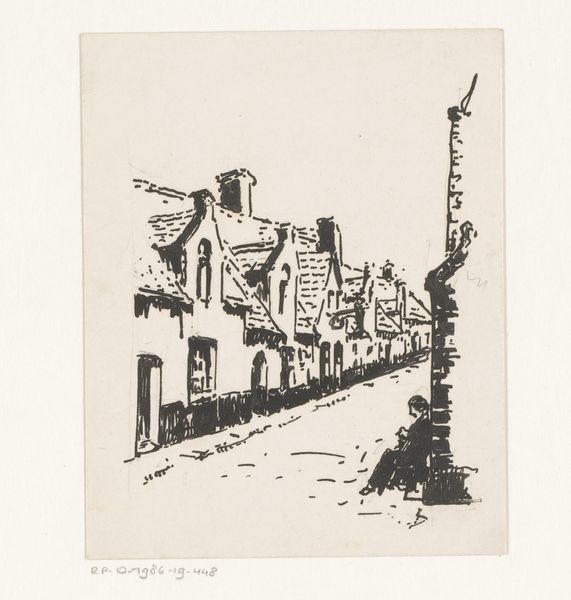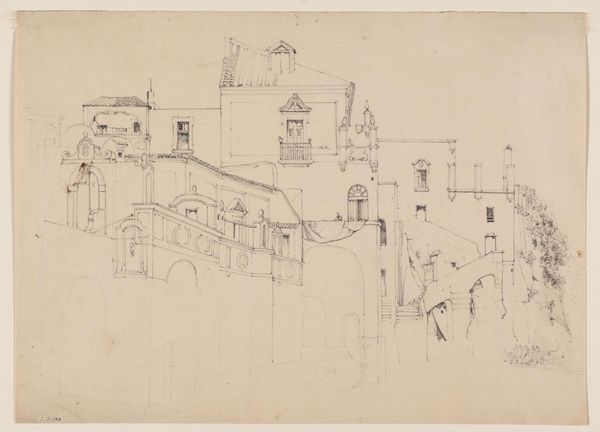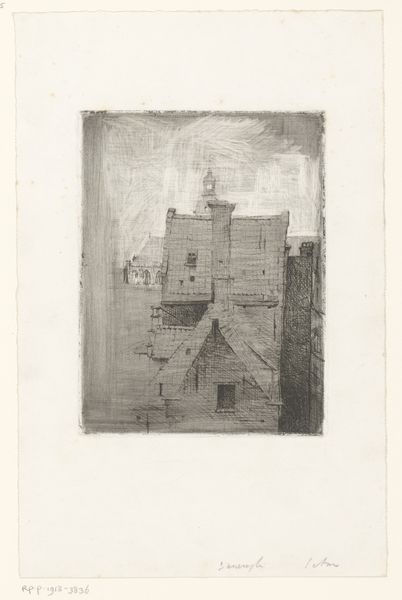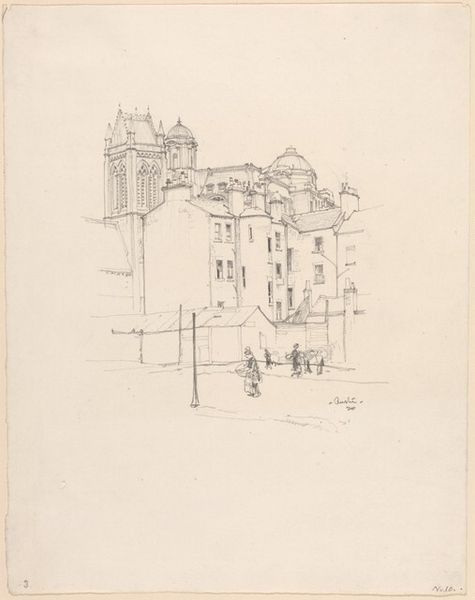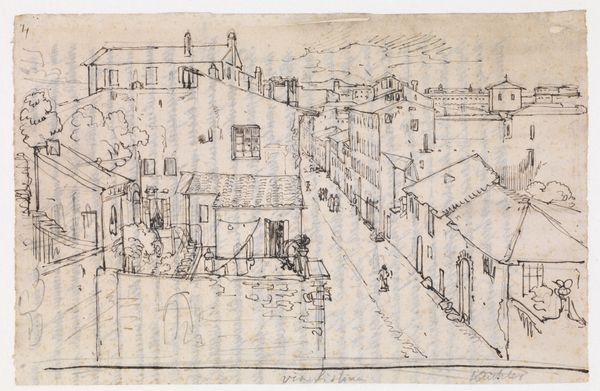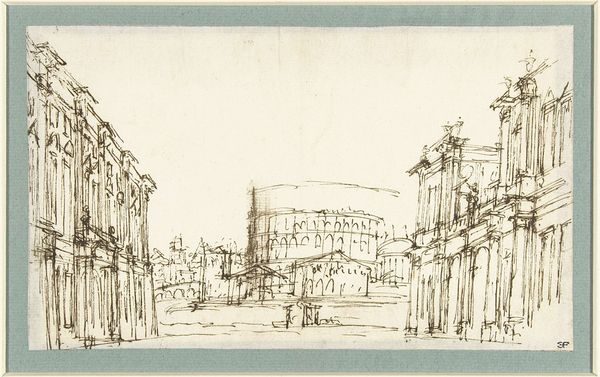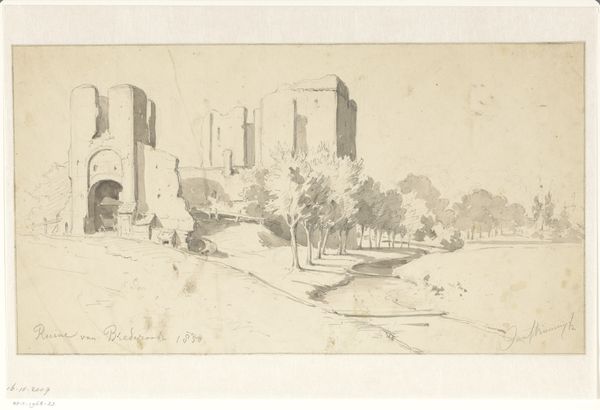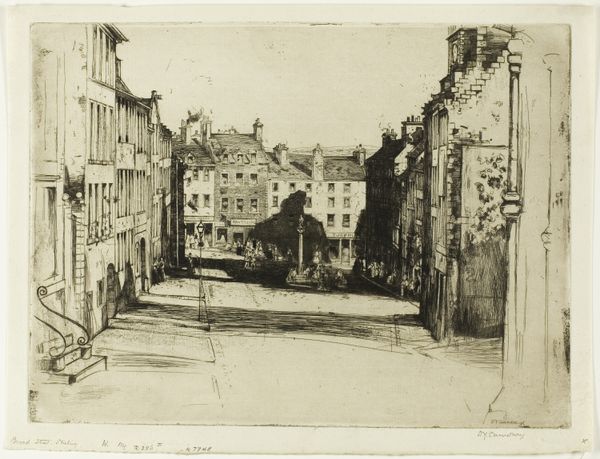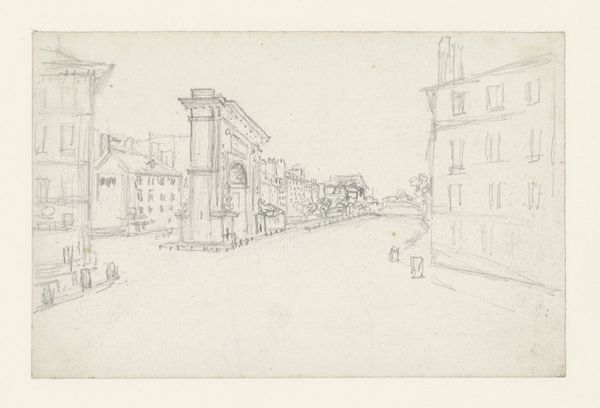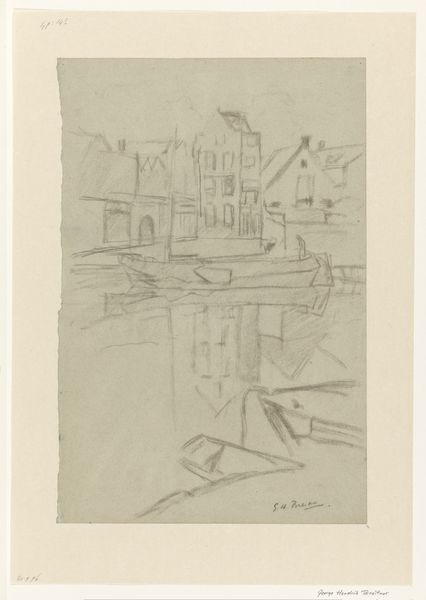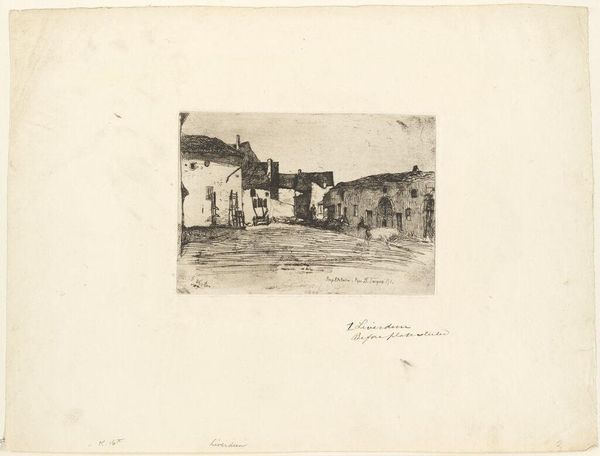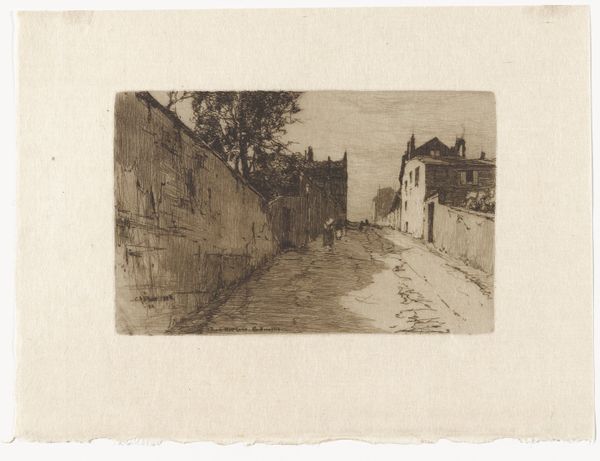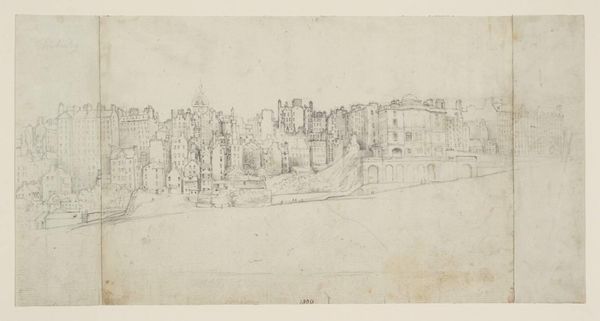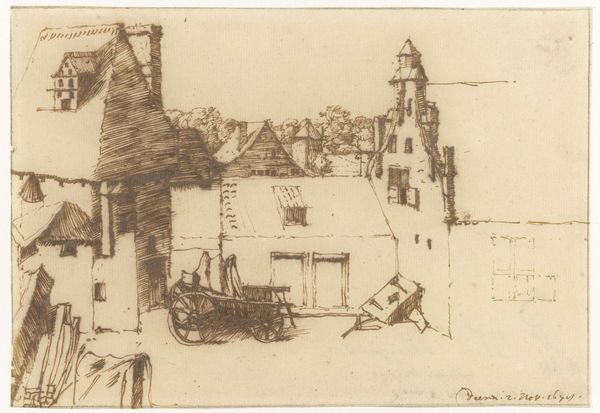
Dimensions: height 215 mm, width 278 mm
Copyright: Rijks Museum: Open Domain
Curator: Looking at George Hendrik Breitner's "Het Rokin, gezien vanuit Arti," made between 1890 and 1896, held here at the Rijksmuseum, it's fascinating to consider his depiction of Amsterdam’s urban life, rendered with pen and ink in a drawing that borders on etching. Editor: It feels so immediate. I see the energy of the street, though it’s surprisingly quiet in the image itself. The lines are quick, almost nervous, capturing the essence but leaving so much unsaid. Curator: Precisely. Breitner was very much a painter of the everyday, often accused of being a 'street painter' focusing on working-class subjects that were largely excluded from academic art traditions. His choice to depict a regular street scene, devoid of any grand narrative, reflects a democratic impulse—an attempt to elevate the mundane. Editor: The street itself seems like a stage, doesn't it? The buildings flanking it are almost like theater flats. It brings to mind the architectural symbols we associate with stability and order being contrasted with the fluid chaos of city life. The implied narrative feels deeply rooted in collective memory. Curator: And think about what the street signifies during this period of rapid urbanization; public space becomes contested space, a site of class conflict, gendered encounters, and shifting social mores. The unidealized figures in his painting reflect this urban reality. Editor: And his line work feels almost prophetic. The jagged strokes that outline these buildings echo a modern sense of unease that came to mark the 20th century. This simple street becomes an archetype—a signifier for change. Curator: Exactly, we witness here not just a snapshot of Amsterdam, but a critical engagement with the burgeoning social issues that defined the era. Editor: I see those issues simmering beneath the surface, transforming an everyday view into an emblem of historical change. Curator: Ultimately, it invites us to see the streets we traverse as repositories of stories and historical meaning. Editor: Indeed, a silent witness etched in time.
Comments
No comments
Be the first to comment and join the conversation on the ultimate creative platform.
